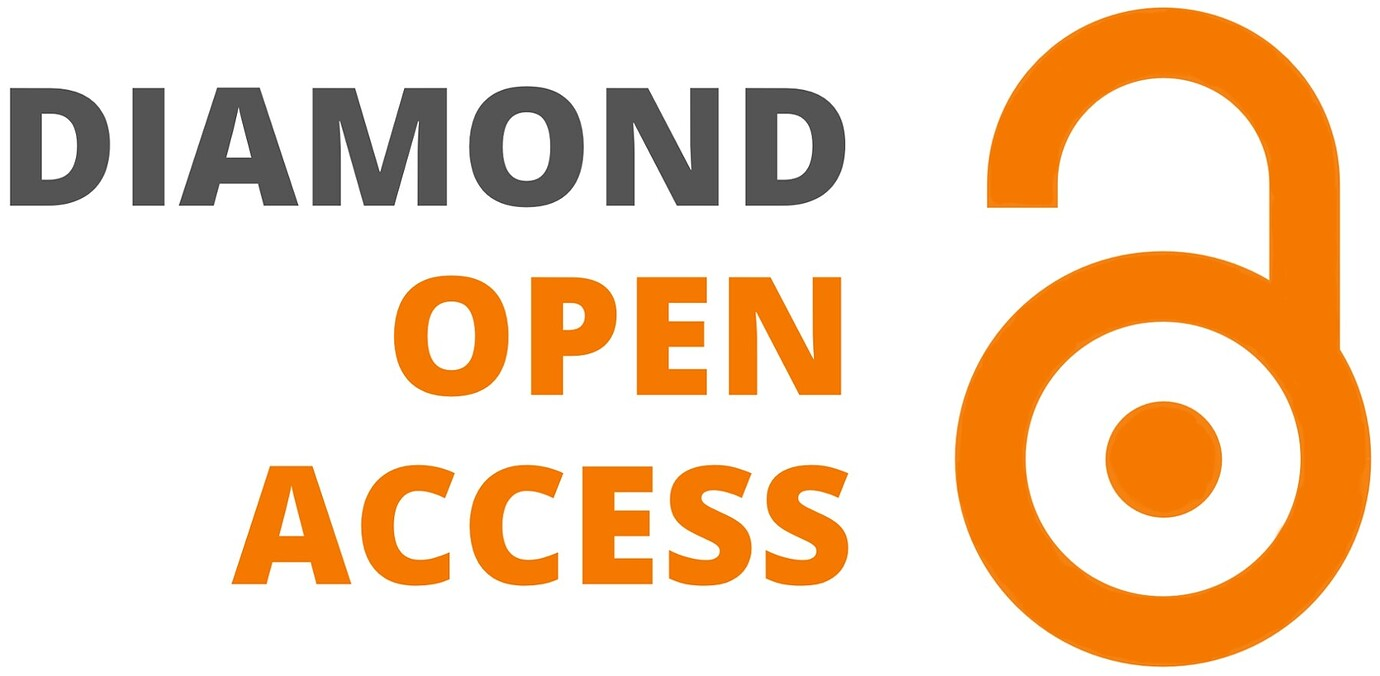Assessing the verbal comprehension of children with ASD and intellectual disabilities: impact of the tablet vs paper format.
DOI:
https://doi.org/10.61989/n7p5dk44Keywords:
intellectual disability, verbal comprehension, digital tablet, assessment, Autism Spectrum DisorderAbstract
Context: Verbal comprehension is a key component of language development. However, this component is particularly deficient in children with Autism Spectrum Disorder (ASD) and intellectual disability (ID). Currently, its evaluation is complicated, especially because existing tests are not adapted to the cognitive and sensory particularities of children with ASD and ID. Recent research shows that digital tools are motivating and easy to use with these children. In this study, we aimed to assess the impact of the support tablet vs paper on the passation of a verbal comprehension test.
Methods: In this study, 12 children with ASD and ID with a level of verbal comprehension between 18 and 36 months of age were evaluated on a tablet and on paper with a lexical comprehension test and a syntactic comprehension test.
Results: Although the medium did not influence the children's scores on the two tests, the tablet test was significantly shorter than the paper test. In addition, the scores on the behavioral grid were better when the children were evaluated on the tablet, highlighting a better adaptation to the situation and a decrease in the specific sensory behaviors of patients with ASD.
Conclusion: These observations show that the use of a digital support for the evaluation of children with ASD can encourage their participation in the proposed tests.
References
Abadie, C., Aimard, P., & Bazin, F. (1990). Une épreuve de langage pour les enfants de moins de 3 ans – épreuve de Nelly Carole. Glossa, 17, 40-43. https://www.glossa.fr/index.php/glossa/article/view/544
Antheunis, P., Ercolani-Bertrand, F., & Roy, S. (2007). L’accompagnement parental au cœur des objectifs de prévention de l’orthophoniste. Contraste, 1(26), 303‑320. https://doi.org/10.3917/cont.026.0303
Antheunis, P., Ercolani-Bertrand, F., & Roy, S. (2005). Dialogoris 0/4 ans orthophoniste. Com-médic.
Bernard Paulais, M.-A., Mazetto, C., Thiébaut, E., Nassif, M. C., Costa Coelho de Souza, M. T., Stefani, A. P., Blanc, R., Gattegno, M. P., Aïad, F., Sam, N., Belal, L., Fekih, L., Kaye, K., Contejean, Y., Wendland, J., Barthélémy, C., Bonnet-Brilhaut, F., & Adrien, J.-L. (2019). Heterogeneities in cognitive and socio-emotional development in children with autism spectrum disorder and severe intellectual disability as a comorbidity. Frontiers in Psychiatry, 10, 508. https://doi.org/10.3389/fpsyt.2019.00508
Bourgueil, O., Regnault, G., & Moutier, S. (2015). Création d’outils numériques pour personnes avec trouble du spectre de l’autisme : de la recherche à la pratique, et vice versa. Enfance, 1, 111-126. https://doi.org/10.4074/S001375451500107X
Bovet, F., Danjou, G., Langue, J., Moretto, M., Tockert, E., & Kern, S. (2005). Les inventaires français du développement communicatif (IFDC) : un nouvel outil pour évaluer le développement communicatif du nourrisson. Médecine et enfance, 25(6), 327-332. http://www.ddl.cnrs.fr/Annuaires/Index.asp?Langue=FR&Page=Sophie%20KERN#Publication
Chevrie-Muller C., Simon, A.-M., Le Normand, M.-T., & Fournier, S. (1997). BEPL. Batterie d'évaluation psycholinguistique. ECPA.
CNIL (S.D.). Méthodologie de référenceMR – 003. Recherches dans le domaine de la santé sans recueil du consentement. https://www.cnil.fr/fr/declaration/mr-003-recherches-dans-le-domaine-de-la-sante-sans-recueil-du-consentement
Coquet, F. (2010). EVALO BB. Évaluation du développement du langage oral du jeune enfant de moins de 36 mois ou sans langage. Ortho Édition.
Coquet, F., Ferrand, P., & Roustit, J. (2009). EVALO 2-6. Batterie d’évaluation de langage de l’enfant de 2 à 6,3 ans dont toutes les épreuves sont normées individuellement. Ortho Édition.
Coquet, F., Roustit, J., & Jeunier, B. (2007). Batterie EVALO 2-6. Évaluation du développement du langage oral et des comportements non verbaux du jeune enfant. Rééducation Orthophonique, 231, 203-226.
Courtois-du Passage, N., & Galloux, A.-S. (2004). Langage oral et bilan orthophonique chez l'enfant atteint d'autisme. Glossa, 88, 46-61. https://www.glossa.fr/index.php/glossa/article/view/85
Degenne-Richard, C., Wolff, M., Fiard, D., & Adrien, J. L. (2014). Les spécificités sensorielles des personnes avec autisme de l’enfance à l’âge adulte. A.N.A.E., 26(128), 69-78. https://www.eadoc.fr/index.php?lvl=notice_display&id=70591
Edwards, S., Fletcher, P., Garman, M., Hughes, A., Letts, C., & Sinka, L. (1997). The Reynell Developmental Language Scales III. The University of Reading Edition. NFER-Nelson.
Garié, L. A. (2021). Pratique orthophonique avec les enfants et adolescents présentant un TSA. De Boeck Supérieur.
Garnier, P. (2017). Témoignages d’enseignantes concernant les usages pédagogiques de la tablette numérique chez des élèves avec TSA. La nouvelle revue de l'adaptation et de la scolarisation, 78, 99-117. https://insei.hal.science/hal-01673860
Goldman, S., Wang, C., Salgado, M. W., Greene, P. E., Kim, M., & Rapin, I. (2009). Motor stereotypies in children with autism and other developmental disorders. Developmental Medicine & Child Neurology, 51(1), 30-38. https://doi.org/10.1111/j.1469-8749.2008.03178.x
Grossard, C., & Grynszpan, O. (2015). Entraînement des compétences assistées par les technologies numériques dans l’autisme : une revue. Enfance, 1, 67-85. https://doi.org/10.4074/S0013754515001056
Grossard, C., Pinabiaux, C., Charpentier, A., Lalande, A.-C., & Grosmaitre, C. (2015). Evaluation du langage de l'enfant de 18 à 36 mois : Adaptation d'Antoine et Caroline. A.N.A.E., 134, 73-92.
Guidetti, M., & Tourette, C. (1993). L’ESCP ou l’Evaluation de la Communication Sociale Précoce. EAP.
Haute Autorité de Santé-HAS (2018). Trouble du Spectre de l’autisme, signes d’alerte, repérage, diagnostic et évaluation chez l’enfant et l’adolescent. Recommandation de bonne pratique. https://www.has-sante.fr/jcms/c_468812/fr/trouble-du-spectre-de-l-autisme-signes-d-alerte-reperage-diagnostic-et-evaluation-chez-l-enfant-et-l-adolescent
Haute Autorité de Santé-HAS (2022). L’accompagnement de la personne présentant un trouble du développement intellectuel (TDI) - Volet 1. Recommandation de bonne pratique. https://www.has-sante.fr/jcms/p_3237847/fr/l-accompagnement-de-la-personne-presentant-un-trouble-du-developpement-intellectuel-tdi-volet-1
Howlin, P., Savage, S., Moss, P., Tempier, A., & Rutter, M. (2014). Cognitive and language skills in adults with autism: A 40-year follow-up. Journal of Child Psychology and Psychiatry, 55(1), 49-58. https://doi.org/10.1111/jcpp.12115
Inoue, M. (2019). Assessments and interventions to address challenging behavior in individuals with intellectual disability and autism spectrum disorder in Japan: A consolidated review. Yonago Acta Medica, 62(2), 169-181. https://doi.org/10.33160/yam.2019.06.001
Inserm (2016). Déficiences intellectuelles. Expertise collective. Synthèse et recommandations. https://www.inserm.fr/expertise-collective/deficiences-intellectuelles/
Koegel, L. K., Singh, A. K., & Koegel, R. L. (2010). Improving motivation for academics in children with autism. Journal of Autism and Developmental Disorders, 40(9), 1057-1066. https://doi.org/10.1007/s10803-010-0962-6
Maljaars, J., Noens, I., Scholte, E., & van Berckelaer-Onnes, I. (2012). Language in low-functioning children with autistic disorder: Differences between receptive and expressive skills and concurrent predictors of language. Journal of Autism and Developmental Disorders, 42, 2181-2191. https://doi.org/10.1007/s10803-012-1476-1
McKinney, A., Weisblatt, E. J., Hotson, K. L., Bilal Ahmed, Z., Dias, C., BenShalom, D., Foster, J., Murphy, S., Villar, S. S., & Belmonte, M. K. (2021). Overcoming hurdles to intervention studies with autistic children with profound communication difficulties and their families. Autism, 25(6), 1627-1639. https://doi.org/10.1177/1362361321998916
Montallana, K. L., Gard, B. M., Lotfizadeh, A. D., & Poling, A. (2019). Inter-rater agreement for the milestones and barriers assessments of the Verbal Behavior Milestones Assessment and Placement Program (VB-MAPP). Journal of Autism and Developmental Disorders, 49(5), 2015–2023. https://doi.org/10.1007/s10803-019-03879-4
Nader-Grosbois, N. (2007). Régulation, autorégulation, dysrégulation : pistes pour l'intervention et la recherche. Mardaga.
Neely, L., Rispoli, M., Camargo, S., Davis, H., & Boles, M. (2013). The effect of instructional use of an iPad on challenging behavior and academic engagement for two students with autism. Research in Autism Spectrum Disorders, 7(4), 509‑516. https://doi.org/10.1016/j.rasd.2012.12.004
Padilla, K. L., & Akers, J. S. (2021). Content validity evidence for the verbal behavior milestones assessment and placement program. Journal of Autism and Developmental Disorders, 51(11), 4054-4066. https://doi.org/10.1007/s10803-020-04864-y
Plesa Skwerer, D., Jordan, S. E., Brukilacchio, B. H., & Tager-Flusberg, H. (2016). Comparing methods for assessing receptive language skills in minimally verbal children and adolescents with autism spectrum disorders. Autism, 20(5), 591-604. https://doi.org/10.1177/1362361315600146
Rivard, M., Dionne, C., Morin, D., & Gagnon, M.-A. (2013). Perceptions du personnel des centres de réadaptation en déficience intellectuelle et troubles envahissants du développement quant aux troubles du comportement chez les jeunes enfants. Revue de psychoéducation, 42(1), 115-133. https://doi.org/10.7202/1061726ar
Schopler, E., Lansing, M. D., Reichler, R. J., & Marcus, L. M. (2021). PEP-3 : Profil psycho-éducatif. Évaluation psycho-éducative individualisée de la division TEACCH pour enfants présentant des troubles du spectre de l'autisme (3e éd.). De Boeck Supérieur.
Serret, S., Hun, S., Thümmler, S., Pierron, P., Santos, A., Bourgeois, J., & Askenazy, F. (2017). Teaching literacy skills to French minimally verbal school-aged children with autism spectrum disorders with the serious game SEMA-TIC: An exploratory study. Frontiers in Psychology, 8, 1523. https://doi.org/10.3389/fpsyg.2017.01523
Sundberg, M.L. (2008). Verbal Behavior Milestones Assessment and Placement Program: The VB-MAPP (2e éd.). AVB Press
Tager-Flusberg, H. (1999). The challenge of studying language development in children with autism. In L. Menn et N. Berbstein Ratner (dir.), Methods for studying language production (p. 317-336). Psychology Press.
Thommen, E., & Chastellain, A. (2009). Les comportements stéréotypés chez trois personnes adultes atteintes d’autisme : une analyse de leur occurrence lors d’activités quotidiennes. Revue Francophone de la Déficience Intellectuelle, 20, 156-164. https://rfdi.org/index.php/1/article/view/171
Trembath, D., Paynter, J., Sutherland, R., & Tager-Flusberg, H. (2019). Assessing communication in children with autism spectrum disorder who are minimally verbal. Current Developmental Disorders Reports, 6(3), 103-110. https://doi.org/10.1007/s40474-019-00171-z
Valentine, A. Z., Brown, B. J., Groom, M. J., Young, E., Hollis, C., & Hall, C. L. (2020). A systematic review evaluating the implementation of technologies to assess, monitor and treat neurodevelopmental disorders: A map of the current evidence. Clinical Psychology Review, 80, 101870. https://doi.org/10.1016/j.cpr.2020.101870
Valkenburg, P. M. (2004). Children's responses to the screen: A media psychological approach. Routledge.
Virole, B. (2014). Autisme et tablettes numériques. Enfances & Psy, 2(63), 123-134. https://shs.cairn.info/revue-enfances-et-psy-2014-2-page-123?lang=fr
Winter-Messiers, M. A. (2007). From tarantulas to toilet brushes: Understanding the special interest areas of children and youth with Asperger syndrome. Remedial and Special Education, 28(3), 140-152. https://doi.org/10.1177/07419325070280030301
Zakari, H. M., Ma, M., Simmons, D. (2014). A Review of Serious Games for Children with Autism Spectrum Disorders (ASD). In M. Ma, M. F. Oliveira, et J. Baalsrud Hauge (dir.), Serious Games Development and Applications. SGDA 2014. Lecture Notes in Computer Science (vol 8778). Springer. https://doi.org/10.1007/978-3-319-11623-5_9
Downloads
Published
License
Copyright (c) 2024 Charline Grossard

This work is licensed under a Creative Commons Attribution 4.0 International License.




